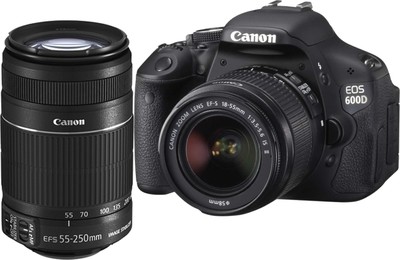A remarkable technological advancement, digital single-lens reflex cameras are colloquially known as a digital SLR or DSLR cameras. It is a digital camera which culminates both the optics and the mechanisms of a single-lens reflex camera with a digital imaging sensor, as opposed to the photographic film cameras used earlier. With everything under the sun moving towards a smart and easy way, cameras have also joined the league. Now, you do not need to worry about adjusting numerous times, and rather leave those responsibilities to your camera. The features of dslr camera makes photography a lot more simpler than what it was earlier. With most of its functions operating automatically, DSLR cameras have paved way for quicker and simpler photographic features.
photography a lot more simpler than what it was earlier. With most of its functions operating automatically, DSLR cameras have paved way for quicker and simpler photographic features.
 photography a lot more simpler than what it was earlier. With most of its functions operating automatically, DSLR cameras have paved way for quicker and simpler photographic features.
photography a lot more simpler than what it was earlier. With most of its functions operating automatically, DSLR cameras have paved way for quicker and simpler photographic features.
However, in order to understand the features of DSLRs, the best way is to learn them in comparison to other types of cameras. The primary difference between a DSLR and other digital cameras is the reflex design scheme. The reflex design works on a specific principle in which, light travels through the lens, then to a mirror that reflects to send the image to either the viewfinder or the image sensor. Thus, by using only one lens, the viewfinder or image sensor presents an image that will not result in a vivid difference from what is captured by the camera’s sensor.
In order to delve deeper into the features of the DSLR cameras, we need to understand the workings and their various uses. DSLR cameras, along with most of the digital cameras, generally have a mode dial to access standard camera settings or automatic scene-mode settings. They often include modes like full-auto, landscape, portrait, action, macro, and night modes and so on. Professional DSLRs hardly contain automatic scene modes because professionals are skillful enough to understand their equipment and can quickly adjust the settings as per their requirements. DSLR cameras are designed with the ability to exchange lenses. This gives you the option of changing the camera lens in accordance to your photographic needs. With a High Definition interface introduced in 2008, few models of DSLR cameras can be used to capture realistic videos. Earlier HDSLRs were not ideal for amateur photographers as they needed some level of planning and skill for location shooting. Now, with more advanced technology, HDSLRs have gained immense prominence, though more on the professional front. They are ideal for shooting short films. Another feature called live preview plays a vital role in underwater photography as the camera is enclosed within a waterproof plastic bag. These cameras are useful in situations where the camera’s eye-level viewfinder cannot be used to capture a moment. Designed with larger sensor sizes and better image quality, DSLR cameras help you click and get up close and personal with your favourite moments without even going near to them.
DSLRs have a wider angle of view which captures a panoramic view easily. You can enjoy clicking a vast landscape or a huge area without any adjustment issues. These digitally-created images have more natural colours and realistic settings. You can click multitude of pictures and enjoy them with your loved ones.
DSLRs have a wider angle of view which captures a panoramic view easily. You can enjoy clicking a vast landscape or a huge area without any adjustment issues. These digitally-created images have more natural colours and realistic settings. You can click multitude of pictures and enjoy them with your loved ones.
No comments:
Post a Comment